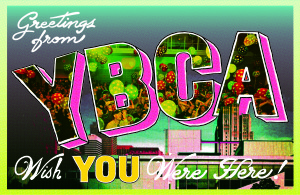Each laid-off employee will receive up to 12 weeks of severance pay based on tenure, and three months of health insurance, said Cullinan, who added that she spoke with each laid-off employee individually.
The remaining 44 employees will see salary cuts of 5%–12%, with the highest reductions at the top level of the organization.
“As an organization that cares deeply about its employees, we held off on making these changes as long as our finances would allow,” Cullinan said. “We also carefully considered equity in all of our decision making.”
Cullinan said a few staffers with skills that are currently in demand—like technical production and project management—have been given the chance to step into new positions.
Cullinan described the new organizational structure as a group of “pods.” “We have a pod of people that will be working primarily on strategy and revenue. We have a pod focused on program and public engagement. Then we have a pod working around marketing, communication and technology. And our operations pod is sort of the wrap-around,” Cullinan said.
The re-organization has led to a slight increase in the number of employees from underrepresented backgrounds, at least in terms of ethnicity.
Before the cuts were announced, 43.6% of YBCA staffers self-identified as Black, Indigenous and people of color (BIPOC). Now, 47% of the remaining staff identify as BIPOC.
“This announcement reveals the impossible choices YBCA and other organizations are facing,” said Emiko Ono, performing arts program director for the William and Flora Hewlett Foundation, one of YBCA’s funders. The foundation made a $390,000 grant to support YBCA’s performing arts programming in March.
YBCA’s announcement follows large job cuts at other prominent San Francisco cultural institutions, including the San Francisco Museum of Modern Art, the Exploratorium, the American Conservatory Theater and the Fine Arts Museums of San Francisco.
Cullinan said going forward, YBCA plans to focus more deeply on public art, digital programming and linking artists with financial relief and career opportunities.
Key programs include a collaboration with the community-based film nonprofit SF Urban Film Fest to reignite YBCA’s screen offerings and the Artist Power Center, a platform the center launched in May focused on connecting artists with resources and opportunities. YBCA is also hoping to continue and expand existing initiatives like CultureBank, a collaboration with artists in West Oakland, and YBCA 100, aimed at bringing together creative “fellows” to help instigate social change.
“What we are focused on is creating more opportunities for more artists to be deeply involved at YBCA,” Cullinan said. “We want to work deeply and over time on game-changing projects.”


